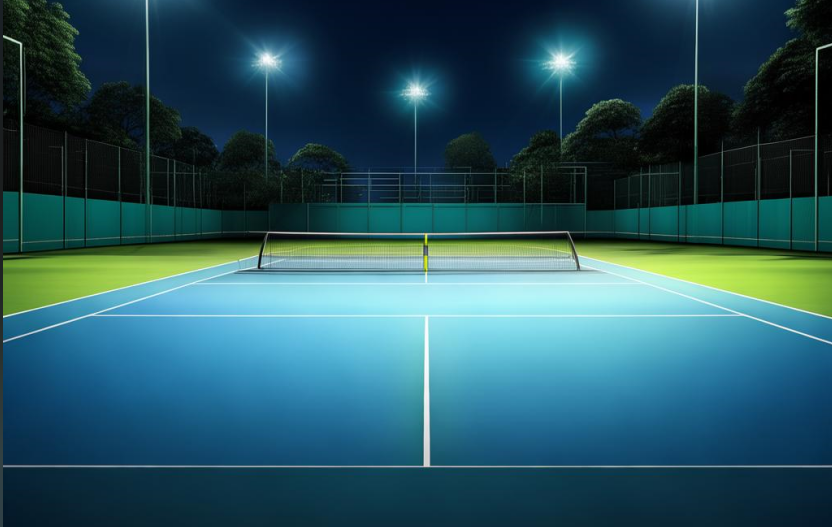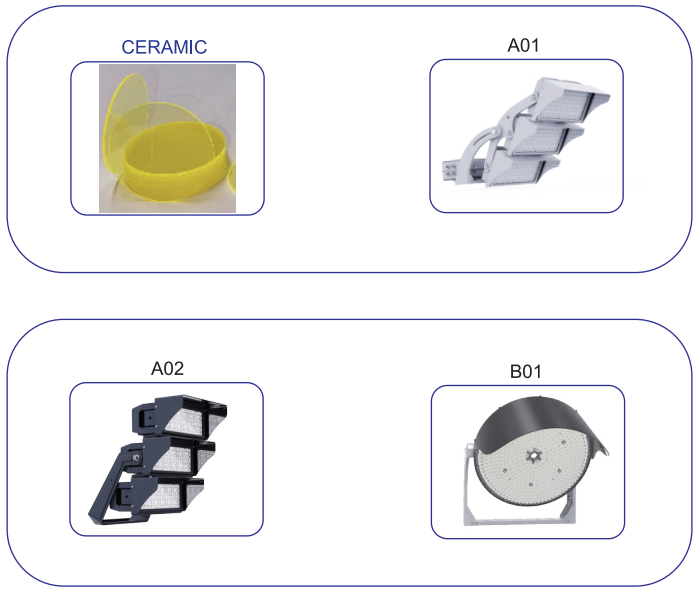College Tennis Court Lighting Control System Design: Led Tennis Court Flood Lights

Directory:
1. Tennis Court Specifications
2. Control System Design Overview
3. Intelligent Lighting Design for Tennis Courts
4. Ceramiclite LED Tennis Court Flood Lights
The tennis courts have specific lighting requirements that go beyond simple switch control, necessitating advanced intelligent lighting solutions. The advancements in computer network and automation technologies have significantly enhanced lighting control, ushering in an era of smart lighting. By improving the control capabilities of lighting systems, energy can be conserved, and maintenance costs can be lowered. Intelligent lighting control systems can automatically gather various data based on environmental changes and the unique needs of the tennis court, allowing for analysis, reasoning, judgment, storage, display, transmission, and feedback to achieve the desired control outcomes.
1. Tennis Court Specifications
This college tennis court measures 36.58 meters in length and 18.29 meters in width, with an additional 3.66 meters of clear space behind the baseline. The net posts are positioned on the court, spaced 12.80 meters apart. The top of each net post stands 1.07 meters above the ground, while the upper edge of the net's center is 0.914 meters high. Indoor tennis courts feature a steel structure roof that reaches a height of 12 meters, with lighting fixtures typically installed at around 10 meters.
2. Control System Design Overview
The stadium is equipped with 20 sets of 200W lamps, which are symmetrically arranged on both sides. The lamps on each side are spaced 3000mm apart and are positioned 2 meters from the sideline. A two-way control system is implemented, utilizing delay and interval lighting for regular training sessions, while all lights are activated during competitions. The intelligent lighting system features zoned centralized management, dividing the setup into multiple areas based on function and location. Each area is equipped with specific functional modules tailored to its purpose, and the dimming interface is managed through the main control module. By integrating illumination sensors, the system automatically adjusts the brightness of individual lamps to maintain a consistent illumination level of 252lx in the hall and an average of E=6641x in the competition area, effectively meeting lighting requirements while maximizing energy efficiency. Additionally, the system includes a scene timing function that allows for various modes to be set and controlled with a single button. Sensors enable energy savings by turning lights on when people enter and off when they leave. A programmable dimming touch panel is installed to preset multiple lighting scenes based on the functional characteristics of each area and different times, with options for manual programming to easily select or adjust scenes. During competitions featuring top domestic and international tennis players, a simple button press on the touch screen allows the stadium to display lights in various colors. The LED gradient function conveys different information to the audience, such as player details and game results, enhancing the overall experience for spectators.
3. Intelligent Lighting Design for Tennis Courts
3.1 Essential Lighting Requirements for Tennis Courts
The lighting design in a tennis hall must not only provide an enjoyable viewing experience for the audience but also meet the lighting needs of referees, players, and television broadcasts. This includes achieving appropriate and uniform illumination and brightness, ideal light color and color rendering, while avoiding glare. The technical specifications for lighting in a tennis hall include: horizontal illuminance of at least 1400 lux, horizontal illuminance uniformity greater than 0.6. vertical illuminance exceeding 750 lux, and vertical illuminance for audience seating of at least 0.85. Typically, lighting fixtures should not be installed directly above the playing area to prevent negative impacts on the players' line of sight during matches. The positioning and angle of the lights should be designed to minimize glare for athletes and to prevent direct and reflected light from affecting both players and spectators. Effective energy-saving measures can lead to significant economic advantages. Utilizing soft start technology can extend the lifespan of the lights, enhance the working environment, create various lighting effects, improve work efficiency, and lower maintenance costs.
3.2 LED Light Source Design for Tennis Courts
The lighting design for tennis halls is tailored to meet the requirements of high-definition television broadcasts. Illuminance levels are calculated based on different time periods during indoor tennis matches, ensuring that the minimum vertical illuminance for fixed cameras is maintained throughout all game times. Additionally, the vertical illuminance in key areas around the venue is taken into account to ensure optimal television broadcast quality. The design addresses not only the court lighting but also the illumination needs of the surrounding areas. The minimum vertical illumination for each fixed camera is set at over 2000 lux, while the minimum for mobile cameras and the four sides of the court is at least 1400 lux. The illumination metrics, including both value and uniformity, significantly exceed standard requirements.
To manage glare, no lighting fixtures are placed directly above the court area. The design effectively controls the projection angle of the lights (θ≤65°), reducing glare and balancing the horizontal and vertical illumination ratios within the venue. Special attention is given to the unique conditions and lighting needs of tennis events, with strict measures in place to limit reflected glare on audience seating caused by light reflections from the court surface.
3.3 Smart Control Dimmer
The LED dimming capability ranges from 1% to 100%. The integration of computer control technology in lighting has introduced significant flexibility in how lights are activated. Lights can be pre-set for various usage scenarios or adjusted in real-time based on the current conditions. By utilizing advanced power electronics, most light sources can be automatically dimmed, allowing for better adaptation to changes in natural light, ensuring that artificial lighting remains consistently illuminated. The smart dimmer facilitates timed operations, automatic scene selection, pre-settings, and various lighting control modes.
Currently, traditional dimming methods for standard fluorescent lamps are not compatible with LED light sources. This incompatibility arises primarily from two factors: first, gas discharge lamps differ from incandescent lamps, making dimming more challenging. Additionally, the unique design and compact size of LEDs complicate the dimming process. Second, fluorescent lamps have a structure similar to incandescent lamps, featuring only two input wires, unlike LEDs which have four output connections.
The intelligent lighting dimming system for tennis halls represents a new generation of centralized wireless dimming control, developed using zigbee 2.4G wireless frequency modulation, mesh network self-healing, multi-level jumping, data encryption, and Ethernet technologies. This system is characterized by straightforward wiring and ease of use. Users can adjust, control, locate, and switch indoor lights via mobile phones or computers, and it can connect to devices for IR remote control. Additionally, the system includes an RS232 interface for easy connection to a PC and setting the DALI address.
4. Ceramiclite Led Tennis Court Flood Lights
Tennis Court Flood Lights A01 Tennis Court Flood Lights A02 Tennis Court Flood Lights B01
